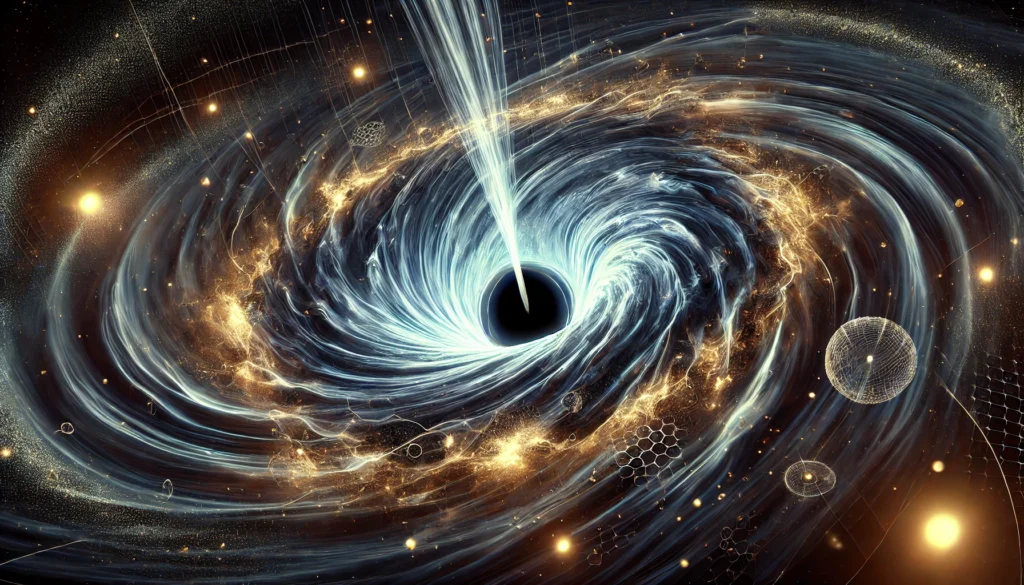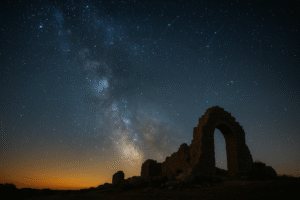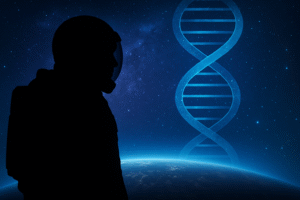Fun Fact: Did you know that quantum mechanics, which deals with the tiniest particles in the universe, can help us understand massive cosmic objects like black holes and galaxies?
For centuries, astronomy has helped humans gaze up at the stars, wonder about the universe, and seek to unravel its many mysteries. While traditional astronomy has relied on optical telescopes and radio waves to study celestial objects, a groundbreaking new approach is emerging—Quantum Astronomy. This cutting-edge field applies the principles of quantum mechanics, which govern the tiniest particles like electrons and photons, to help us understand the vast, mysterious cosmos in unprecedented ways.
The Quantum Connection: How Tiny Particles Reveal Cosmic Secrets
Quantum mechanics is a branch of physics that deals with the behaviour of particles at the atomic and subatomic levels. It’s strange, counterintuitive, and almost feels like a magical world where particles can be in two places at once, and objects can be connected across vast distances—what Albert Einstein famously called “spooky action at a distance” or quantum entanglement.
But how does this quantum “weirdness” help us study the vast expanse of space? To answer that, let’s dive into a few core principles of quantum mechanics and see how they link to astronomy.
Quantum Entanglement: Cosmic Connections Beyond Time and Space
Quantum entanglement is a phenomenon where two particles become interconnected, no matter how far apart they are. If something happens to one, the other responds instantly. Imagine having two friends on opposite sides of the planet, and as soon as one sneezes, the other instantly says, “Bless you!”—even without a phone call.
In the context of quantum astronomy, scientists are exploring how this entanglement could be used to detect faint cosmic signals that would otherwise be lost in space. Quantum detectors, equipped with entangled particles, could pick up incredibly weak signals from distant galaxies, supernovae, or even black holes. It’s like having a super-sensitive cosmic eavesdropping device!

Quantum Tunneling: Breaking Through Barriers
Another key quantum phenomenon is quantum tunnelling, which allows particles to pass through seemingly impenetrable barriers. While this may sound like science fiction, it has a real and measurable effect. For astronomers, this could be a game-changer when studying dense, high-energy cosmic objects like neutron stars and black holes.
Neutron stars, for instance, are so dense that light struggles to escape. But by applying quantum tunnelling, scientists can theorize ways to detect the tiniest leaks of information from these celestial giants. This could unlock answers to questions about the internal workings of such stars, which have remained shrouded in mystery.
Quantum Superposition: Seeing Multiple Universes at Once?
In quantum mechanics, particles can exist in a state called superposition, where they are in multiple states simultaneously. For example, an electron can spin in two different directions at once. While this seems impossible in the macro world we live in, it is perfectly normal at the quantum level.
Now, imagine applying this principle to the universe itself. Some scientists suggest that superposition might offer insights into the nature of parallel universes or the multiverse theory, which suggests that multiple universes could exist alongside our own. Quantum astronomy could provide clues about these alternate realities by studying cosmic microwave background radiation, the leftover “echo” from the Big Bang, with ultra-precise quantum sensors.
Quantum Astronomy in Action: Case Studies
Case Study 1: Detecting Gravitational Waves with Quantum Sensors
Gravitational waves, ripples in space-time caused by massive cosmic events like colliding black holes, were first detected in 2015. Since then, astronomers have been using advanced detectors like LIGO (Laser Interferometer Gravitational-Wave Observatory) to study these waves. However, traditional detectors have limitations in sensitivity.
Enter quantum sensors. By using entangled photons, scientists are now developing quantum-enhanced detectors that can pick up even fainter gravitational waves. This could lead to the discovery of smaller, more frequent cosmic events, helping us build a more complete picture of the dynamic universe.
Case Study 2: Exploring Dark Matter with Quantum Technology
Dark matter makes up about 85% of the universe, yet it remains invisible and undetectable with traditional instruments. However, researchers are now using quantum technologies like cold atom interferometry to probe the effects of dark matter on regular matter.
These quantum devices can measure tiny distortions in space-time that might be caused by dark matter’s gravitational influence. By refining these techniques, quantum astronomy may help uncover the true nature of dark matter—a discovery that would revolutionize our understanding of the cosmos.
The Future of Quantum Astronomy
The field of quantum astronomy is still in its infancy, but the potential it holds is mind-blowing. As technology advances, we might witness new quantum instruments capable of mapping distant exoplanets, identifying extraterrestrial life signatures, or even travelling to other star systems through quantum communication.
Imagine a future where space telescopes are equipped with quantum computers, processing vast amounts of data in real time to answer questions that have stumped humanity for generations. The combination of quantum physics and astronomy could bring us closer than ever to understanding the origin of the universe, the nature of time, and the ultimate fate of everything.
Conclusion: A Cosmic Quantum Leap
Quantum astronomy represents a thrilling new frontier in science, blending the smallest scales of reality with the vastness of the cosmos. As scientists delve further into these quantum techniques, we may soon unlock some of the universe’s most profound mysteries, ranging from dark matter and black holes to the intriguing possibility of parallel universes.
The next time you look up at the night sky, remember that the same laws governing the tiny particles in your body also apply to the stars, galaxies, and black holes far, far away. In many ways, quantum astronomy reminds us that we are all connected in this vast, mysterious universe.
Author’s Note:
Writing about quantum astronomy reminds me of how fascinatingly interconnected everything is. The next wave of discovery is likely to come from unexpected places—like the strange world of quantum mechanics. As we look to the future, the stars may reveal secrets far beyond our current understanding, but we are now equipped with the tools to explore them.
G.C., Ecosociosphere contributor.
References and Further Reading:
- Quantum Entanglement and Cosmic Phenomena
- Quantum Mechanics – (AP Physics 2) – Vocab, Definition, Explanations | Fiveable. https://library.fiveable.me/key-terms/ap-physics-2/quantum-mechanics
- Quantum key distribution | Description, Example & Application. https://your-physicist.com/quantum-key-distribution/
- A state of vibration that exists simultaneously at two different times. https://www.techexplorist.com/state-vibration-exists-simultaneously-two-different-times/36981/
- Gravitational Waves Discovered? A Physics Rumor Sends Shockwaves Across Twitter | IBTimes. https://www.ibtimes.com/gravitational-waves-discovered-physics-rumor-sends-shockwaves-across-twitter-2260245




